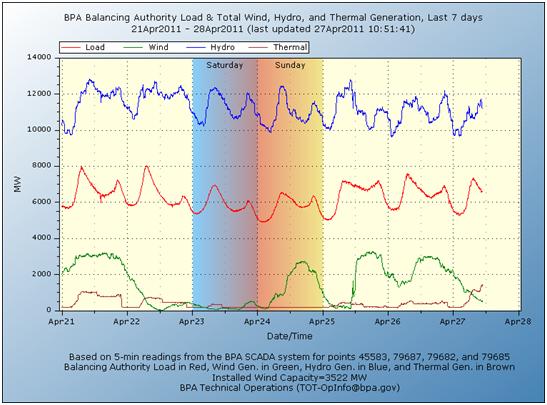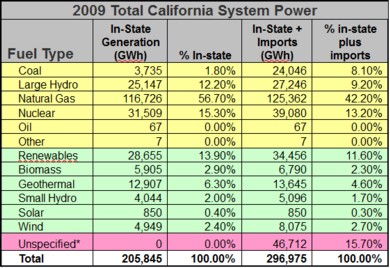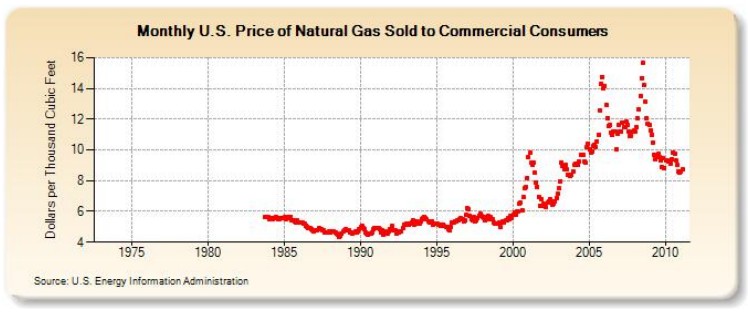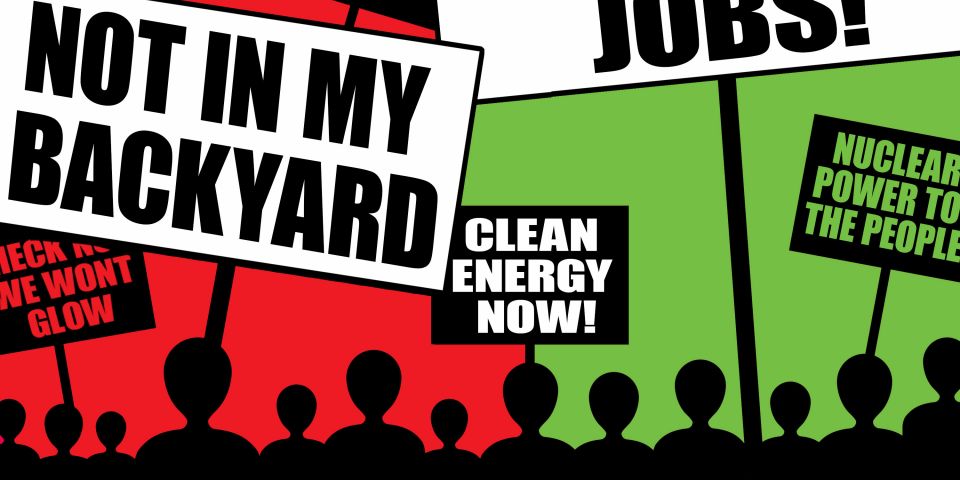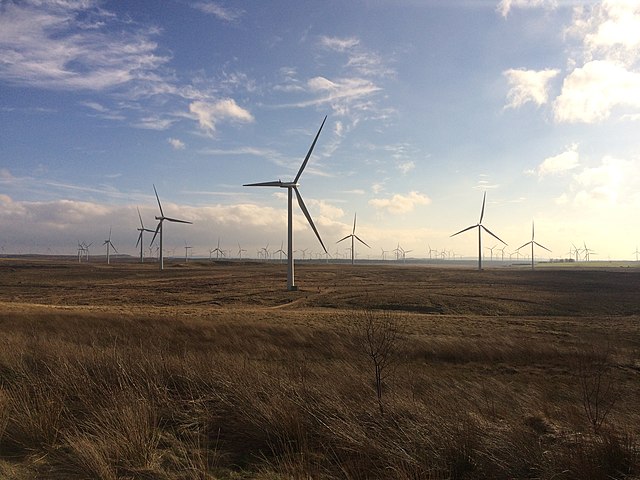Fitting wind onto the electricity grid (part 2)
 In a previous article from January-Fitting Wind onto the Electricity Grid-I presented the advantages and disadvantages of promoting wind power. The conclusion was that there were some advantages, but they were far outweighed by the disadvantages. The reason for having so many wind turbines on the grid is, I said, that it is motivated by politics, not by environmental or economic needs. In this article, I will further explore the reasons why wind turbines are being placed on the grid. In order to do that, I take a look at the Bonneville Power Administration (BPA), a federal agency based in the Pacific Northwest, and the California Independent System Operator (ISO) balancing system.
In a previous article from January-Fitting Wind onto the Electricity Grid-I presented the advantages and disadvantages of promoting wind power. The conclusion was that there were some advantages, but they were far outweighed by the disadvantages. The reason for having so many wind turbines on the grid is, I said, that it is motivated by politics, not by environmental or economic needs. In this article, I will further explore the reasons why wind turbines are being placed on the grid. In order to do that, I take a look at the Bonneville Power Administration (BPA), a federal agency based in the Pacific Northwest, and the California Independent System Operator (ISO) balancing system.
Detailed information is readily available on these two electricity distribution systems, and there is a heavy emphasis on increasing wind generation for both of these grids.
Bonneville Power Administration
The BPA describes placing wind on the grid as a "good thing" for the region. I decided to investigate this value judgment: Is it really a "good thing," and for whom is it good?
The BPA grid is run by the Department of Energy. The BPA Corporate Strategy Statement states that the BPA "markets the power from federal dams within the constraints and requirements for other river purposes," which are:
- Flood control
- Protection of fish under the Endangered Species Act
- Compliance with the Clean Water Act
- Other requirements (including irrigation, navigation, and water supply)
These requirements for the management of the federal dams "take precedence over power production," according to the BPA.
The real time power output of the BPA grid shows that hydro power normally far exceeds the grid demand, which means that the BPA is a net exporter of electricity to neighboring grids in Washington, Oregon, and California. The water runoff from the Columbia River Basin, however, is seasonal and highly variable, as low as 396 cubic meters per second to as high as 15,575 cubic meters per second. It is therefore necessary to back up the hydro power in order to create a stable electricity supply on the grid.
Conventional power sources such as fossil and nuclear are necessary when hydro power is not available. Note that wind turbines are not useful for this purpose since they are intermittent and cannot be turned on when needed.
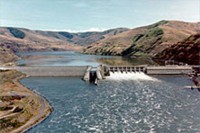 One of the problems faced by the BPA is that during the spring and with ample runoff, a sufficient amount of water needs to pass through the hydro turbines to prevent excess spill, which has been shown to be harmful to fish populations that are protected by the Endangered Species Act. Extraordinary measures are taken during these periods to reduce the power generation from sources other than hydro, including reducing the output from Energy Northwest's Columbia nuclear power plant, in Richland, Wash.
One of the problems faced by the BPA is that during the spring and with ample runoff, a sufficient amount of water needs to pass through the hydro turbines to prevent excess spill, which has been shown to be harmful to fish populations that are protected by the Endangered Species Act. Extraordinary measures are taken during these periods to reduce the power generation from sources other than hydro, including reducing the output from Energy Northwest's Columbia nuclear power plant, in Richland, Wash.
But the electricity generated by wind turbines is required to be accepted on the grid, and this exacerbates the problem. As a result, the BPA is now considering requiring the reduction of wind power as a last resort. But the wind industry is saying that it should be compensated for the lost revenue-in other words, it should be compensated even when the turbines are not producing power.
So, exactly, what is the "good thing" of having so much wind on the BPA grid?
Does wind on the grid increase the power capacity of the grid?
No, the power capacity of the BPA is determined by the power capacity of the hydro turbines and the conventional power plants that can be turned on during the peaks of the electricity demand. When wind is added to the grid, there is no power capability addition, since it cannot be guaranteed that the wind would blow when the power is needed to meet the peak load.
Does wind on the grid increase reliability of the grid?
No, it does not. Fortunately, the BPA normally has ample hydro power that can be adjusted rapidly to compensate for wind power variations. Notice (below) the frequent fluctuations in the hydro power (blue) during April to compensate for the wind power (green), whereas the load (red) is fairly smooth and more predictable. As more wind is added, however, the requirement for hydro to compensate for wind variations will increase. The power-dispatching requirements and the power surges on the transmission lines may get too severe.
During periods of low hydro power, the wind power variation would need to be accommodated by power variations of the conventional fossil and nuclear plants. These generators are not as responsive to rapid variations as hydro turbines.
Some advocates of wind power are counting on better weather predictions to help reduce the impact of the chaotic nature of wind. I respectfully disagree. Weather predictions are currently adequate to predict general wind conditions, but they will never be able to predict the timing and strength of wind gusts.
Does wind on the grid provide any environmental benefit?
No, adding wind on the BPA grid requires adjusting hydro power to compensate for the wind power. Both wind and hydro are emission free, so there is no environmental benefit for that trade off.
In addition, adding wind turbines throughout the BPA service region has a significant land-use and visual impact. This is a high environmental price to pay when the return is the lack of any significant power capability benefit.
Finally, for electricity grids that do not have ample hydro, adding wind also requires adding natural gas, which is not emission free.
Does wind on the grid provide any cost benefit?
No, but other power plants save fuel when the wind turbines are operating. Remember, however, that wind turbines do not replace any other power plant, because they must be backed up by another generator when the wind is not blowing. The cost benefit depends on the cost of the fuel saved. An analysis I performed in my previous article on wind power showed that there is no benefit in most cases.
Does wind on the grid help keep the hydro reservoirs full?
Yes, wind turbines can be used for that purpose. If this, however, is the only benefit of having wind turbines on the grid, should we not allow other power sources to compete on an equal basis? Perhaps other power sources can do it more cheaply and not require feed-in tariffs.
As stated in the BPA Corporate Strategy statement, there has been remarkable growth of wind-generated electricity on the BPA grid. There is currently about 3000 MWe wind capacity on the grid, with another 3000 MWe planned by 2013. This is not so remarkable, however, when one realizes that it is a mandated market and a fully subsidized market. Any product would thrive in such an economic environment.
California ISO balancing system
The California ISO balancing system has recently published real-time generation data similar to that available on the BPA grid. One Web site for the ISO shows the total generation for the current day updated every 10 minutes. This site compares the actual power to the power projection for the current day. Also shown is the wind and solar generation. Notice that a separate graph is required to show the wind and solar contributions, since these inputs are so small that they would not be visible on the first graph.
Another ISO Web site shows the generation results for the previous day. Geothermal is a major renewable contribution in California, generating about 1000 MWe, and is a relatively constant power source during the day. Unfortunately, the opportunity to expand this energy source is limited.
California has recently adopted a 33-percent renewable energy portfolio by 2020 and is relying on wind turbines to generate much of the additional renewable energy.
The electricity production in California in 2009 is shown in the following table:
The renewables sources in California currently contribute 13.9 percent of total electricity production for in-state generation, but only 11.6 percent of the total when imports are included. (The "unspecified" row is as shown in the table because California is currently negotiating with neighboring states to determine how to credit renewable electricity that is generated in other states.)
One thing to note is that California is an importer of electricity, unlike the BPA, which normally exports a large amount of hydro power. This means that California is not in full control of its renewable portfolio, but must seek the help of other states, many of which have their own renewable portfolios to meet.
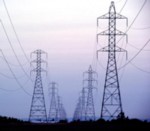 If California is counting on imported energy credits to help meet its renewable portfolio, consumers in neighboring states should ensure that California is legally required to pay for a significant portion of any new transmission-and-distribution equipment costs that are incurred to accommodate renewable power generation.
If California is counting on imported energy credits to help meet its renewable portfolio, consumers in neighboring states should ensure that California is legally required to pay for a significant portion of any new transmission-and-distribution equipment costs that are incurred to accommodate renewable power generation.
The problem with the California renewable goal is that most of the renewable sources-such as biomass, geothermal, and small hydro-cannot be expanded by a significant amount. This leaves the intermittent sources of solar and wind to do the job.
If California is to meet its goal of 33-percent renewables by 2020 and if it is relying on the intermittent sources of solar and wind to accomplish this goal, these two sources must increase from their 2009 contribution of 3 percent (2.7 percent for wind and 0.3 percent for solar). The renewable gap is currently 21.4 percent (33 percent - 11.6 percent), so the intermittent source must increase by a factor of about seven (7 = 21.4 percent/3 percent). This assumes that the energy demand in 2020 is equal to the demand in 2009. If demand grows, as is likely, this factor would be even higher.
It is highly improbable that the California renewable portfolio goal will be accomplished. While it is possible to build more wind turbines and solar panels, there is a limit to the amount of electricity that can be placed on the grid from intermittent sources. This limit will be reached before California gets near its 33-percent renewable goal.
The more likely result of this renewable portfolio will be an increase in the use of natural gas for the production of electricity, which is already happening in California. Natural gas produced 42 percent of the state's electricity in 2009, and it will likely increase under current policies. If natural gas displaces other conventional electricity generators, consumers of electricity should hope that the price of natural gas remains low. This has not been the case in the recent past.
Placing wind on the grid is a good thing for whom?
The conclusion of this review is that placing wind on the grid is not a very "good thing" for consumers or the environment. It is, however, heavily entrenched in today's politics. The following is a quote from Jon Wellinghoff, chairman of the Federal Energy Regulating Commission, when interviewed by a reporter from The Oregonian newspaper:
Q: We're already seeing rate and bill increases from transmission and renewable projects being built in this region.
A: You'll see those rate increases more in the Northwest because you've traditionally had extremely low rates for energy, so the marginal cost for you is going to be higher. That should give you even more impetus to look toward those opportunities to manage the overall bill and not be concerned about the increase in the rate.
Wellinghoff's honesty is appreciated, but what he is saying is that electricity consumers in the Northwest have had it too good for too long with low electricity rates. The rates are going up because of the funds required for renewables projects (such as new transmission lines)-but consumers in the Northwest should not worry about higher rates!
That is a remarkable statement coming from the head of a federal agency whose purpose is to represent the interests of consumers. The best "opportunities to manage the overall bill" is to stop giving preference to particular producers of electricity and to allow a competitive market for all sources. This is how a deregulated electricity market was supposed work. It certainly doesn't work for markets that give preference to renewable energy sources.
____________________________________________________
Ulrich Decher holds a PhD in nuclear engineering. He is a member of the ANS Public Information Committee and a contributor to the ANS Nuclear Cafe.


